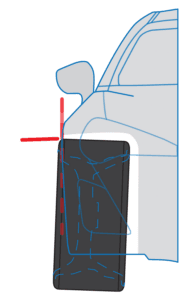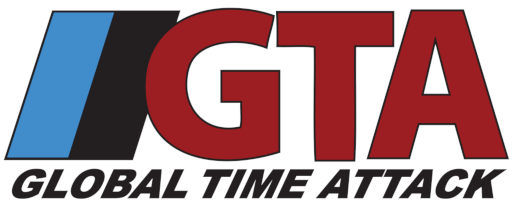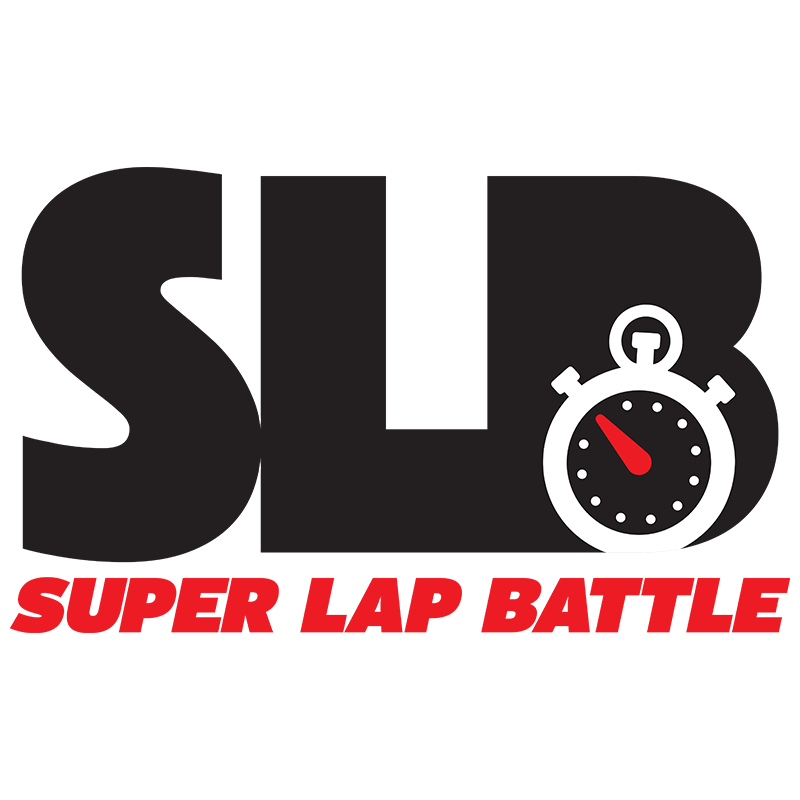Global Time Attack | Super Lap Battle
Street Class Rules
(2025 Edition)
Overview
Your vehicle(s) must meet the basic requirements for street vehicles as stated in the GTA Safety Minimums and General Rules.
Any questionable modifications not specifically covered within the class and overall rules must be submitted for clarification and allowed by GTA Staff.
Street Class Rules
Please address any technical questions to rules@globaltimeattack.com
A. Chassis/Exterior/Aero
- Full carbon fiber or other lightweight material replacement bodies are not permitted. Only bolted on components, i.e. bumpers, fenders, hood and trunk, can be of alternate materials but must be OEM in fitment and mounting, with allowances for additional hood and trunk retention hardware. Doors must remain OEM.
- The OEM tub/chassis, structure and protection must remain intact and not modified in any way; this refers to the entire shell and any welded-on component with allowances for roll cage, seat mounting and tire clearance when flares or overfenders are used.
- Front core supports may be trimmed/modified to fit upgraded cooling components.
- The shock tower may be modified only to allow the installation of camber/caster plates and only as required to obtain the necessary camber and caster.
- Modifications to OEM suspension pick up points are not permitted except for camber adjustment on non-Macpherson strut vehicles mentioned above.
- All Street Class vehicles must retain stock/OEM wheelbase.
- Front air dams, lips, splitters and diffusers may not extend more than 5-inches beyond any portion of the bodywork in any direction as viewed from above. Splitters may only extend rearward to the centerline of the front wheel. Diffusers may only extend forward to the centerline of the rear wheels.
- Barge boards may only protrude inward to the chassis pinch weld, and 3” outward when viewed from above, may only go forward and rearward to the inboard edge of the wheel openings.
- Seam welding is permitted. No additional material other than the weld material may be added.
- Flat bottom floors are not permitted between front and rear wheel centerlines unless factory installed and OEM components are used.
- The rear wing may not be the highest point on the vehicle. End plates and swan type supports may be higher than the roofline by up to 3”. OEM “Duck bills” may be retained and may be used for wing mounting on hatchback/wagons only. Exceptions allowed for hatchbacks and wagons that have no rear deck for mounting a wing.
- Hatchback roof mounted wings may not be more than 14” above the roof.
- No portion of the wing or duckbills may be more than 5-inches rearward of the rear most point on the bodywork when viewed from above.
- The wing may be no more than 5” wider per side than the widest part of the body (not including mirrors).
- Vehicles are limited to a maximum of four canards. Canards must be mounted entirely forward of the front wheel and tire assembly. Canards may project a maximum of 7-inches beyond the OE bodywork in any direction.
- Active aero is not permitted.
- Only one wing is permitted including OEM or aftermarket spoilers, with the exception of vehicles that came with 2 rear spoilers (For Example FK8 Type R and GD STi). Dual element wings are not allowed. Dual element wings may be taped together with heavy-duty tape that will not come off during the session. If the tape does come off, that session will be disqualified.
- Polycarbonate “Lexan” replacement windows are not permitted unless it’s a part of an aftermarket hard/soft top or OEM. Engine covers on mid-engine cars may be polycarbonate as long as there is OEM glass in the passenger area (i.e. NSX).
- Aftermarket fenders, over fenders and fender flares may be installed on the OEM fenders. Rear OEM fenders may only be modified to allow tire clearance. On vehicles with bolt on rear fenders the entire fender may be replaced with an aftermarket fender. Parts may be bolted, riveted, welded or bonded.
- Front fenders may be trimmed or vented for aero.
- Rear diffusers may protrude no more than 5” from the rear body work in any direction when viewed from above.
- All glass roof panels or sun roofs may be replaced with alternate materials.
B. Engine/Drivetrain/Fuel
- Sequentially shifted gearboxes are not permitted unless OEM. Gear sets are open.
- Vehicles may swap gearboxes to only types offered in that chassis from the manufacturer. i.e manual to manual, torque converter automatic to the same.
- Gearbox types are defined in the General Rules (line B item 3).
- Only unleaded gasoline, ethanol blend, diesel, OEM Electric or hybrid systems may be used for propulsion. Leaded, methanol or exotic fuels are NOT allowed as the primary fuel. Water/Methanol injection is allowed.
- Nitrous oxide is not allowed.
- Engine swaps are to be of the same configuration (i.e. FWD to FWD and AWD to AWD) and be of the same manufacturer. You may add or subtract up to 2 cylinders or 1 rotor in a rotary. As an example, you may swap an Accord v6 into a 4cyl Civic or conversely a Sentra 4 cylinder into a V6 Altima. If your vehicle brand does not manufacture engines (i.e. Lotus) then you may only use an engine from the official engine supplier to the original street car.
- Drivetrain changes are not permitted (i.e. FWD to AWD or AWD to RWD conversions).
- Hybrid drive is allowed only in full OEM form with no modifications to the drive, control or battery systems.
- All exhaust must exit the vehicle behind the rear wheel center line, unless otherwise OEM, with exception of wastegate dumps.
C. Suspension/Brakes/Tires/Wheels
- Tire brand is open. We allow DOT-approved treaded tires with a minimum UTQG-rating of 180 or higher.
- Maximum Tire Width:
AWD: 1060mm total (4×265 or 255 front with 275 rear)
FWD: 1100mm total (4×275 or 295 front with 255 rear)
RWD: 1100mm total (4×275 or 215 front with 335 rear) - Aftermarket suspension control arms must retain stock geometry and mounting points or commercially available alignment correction components.
- Aftermarket or modified uprights/spindles/knuckles are not allowed.
- Adjustable shocks/dampers are not permitted to have more than two-way damping adjustments.
- In-car driver-adjustable suspension or sway bars are not permitted unless OEM.
- Sway bars or links are not permitted to be mounted or pass through the vehicle’s interior unless OEM.
- Classic and Vintage vehicles with body on frame and or front subframe encapsulated suspension may update to off the shelf modern suspension.
- Active suspension is not permitted unless OEM.
- Tire warmers are not permitted.
- Aftermarket subframes are not allowed.
- No part of the top of the flat tire tread may protrude past the widest point of the wheel arch/fender/quarter panel or flare when viewed from above at the wheel centerline.

D. Interior/Roll cage/Safety/Misc
- Roll cages are not permitted to penetrate the firewall or mount to plates doing the same. If a six-point roll cage is installed any interior and trim components that are required may be modified only as needed to facilitate installation of the cage system BUT MUST be installed. No more than 6 mounting or attachment points are allowed.
- No roll bar to chassis gusseting or chassis gusseting allowed.
- Cars with fully gutted interiors are NOT permitted. All interior trim forward of the B-pillar must be retained. OEM dash and all related controls, if factory equipped (i.e. radio, heater controls, instrument cluster etc…) must be retained. Radio must power up, if factory equipped, and the blower motor must power up. Steering wheel controls may be removed; steering wheels are open. OEM dash, OEM center consoles, OEM front door panels, headliner, carpet, glove box, kick panels and door sills must remain. Trim levels can be up/downgraded to any trim level available from the manufacturer available for road going public sale. Headliners may be removed only to facilitate the installation of a roll cage.
- The oem instrument cluster may be replaced with a digital display or logger but the remainder of the dash must remain unmodified.
- All vehicles must have a fire extinguisher within reach of the driver as per GTA Safety Minimums.
- All vehicles are required to have front and rear tow hooks.
- A functional and legal passenger seat must be present as well as appropriate safety i.e. factory 3 point for factory or reclining seats, minimum 5 points for fixed back seats.
- OEM Glass is required in all positions. Front door windows must be in full down position. OEM. Engine covers on mid-engine cars may be polycarbonate as long as there is OEM glass in the passenger area (i.e. NSX).
- Headlights and taillights, mirrors must be installed and in working condition.
- The battery must be securely mounted and the positive battery post must be insulated. If the battery is a wet cell or spill type battery it must be mounted in a spill proof container.
- The Street class is not open to professional drivers whose primary occupation is competing in any professional racing series (i.e. NASCAR, Grand Am, IMSA, FIA, Formula Drift) or professionals instructing race drivers. We would ask that drivers in this group consider entering a vehicle in the Limited and Unlimited classes. A professional driver is defined as anyone that has been paid to drive a racecar in a professional series or a paid test driver for a professional racing team. Anyone who is paid to instruct professional race drivers is a race instructor. Club level (SCCA/NASA/ETC) and open to public driving school instructors are not considered pro instructors/drivers and therefore are eligible to compete in enthusiast and street classes.
- All Street class drivers must present valid registration and insurance paperwork during the mandatory pre-race tech inspection.
GTA General Rules: GTA General Rules
GTA Safety Minimums: GTA Safety Minimums
Please address technical questions to rules@globaltimeattack.com

